Pain of building for growth is the price of major cities’ success
Short-term pain for long-term gain, we’re told. But is all this actually going to solve the problems we’ve created in our cities?
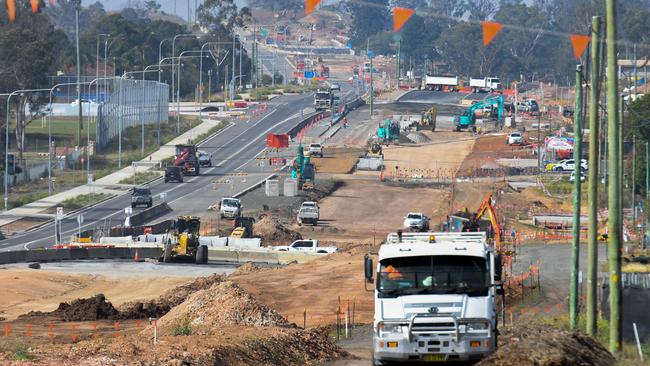
It wasn’t that long ago that the Howard Smith Wharves was the problem child of CBD development in Brisbane. Blind Freddy could see the potential of the riverfront spot, framed by the Story Bridge and tangerine cliffs, but plan after plan bit the dust while they argued over what could be built there.
One of the country’s top events promoters told the man who finally got the nod, Howard Smith Wharves chief executive Luke Fraser, that he had run the ruler over the project 15 years ago and passed. Brisbane wasn’t ready for it. When Fraser showed journalists and marketers through the teeming construction site this week, previewing a $200 million hotel and restaurant precinct that opens in November, the story was very different.
“I really sense there is a change in the outlook of the city,” he said. “You can see it here … the growth we’ve been talking about for years. It’s happening and this is the realisation of it.”
Not only in Brisbane, either. Sydney and Melbourne are entering a game-changing phase as the nation moves inexorably towards a Big Australia and megacity status for the three east coast capitals. In the space of a generation, the combined population of the three cities is projected to hit 20 million: eight million each for Sydney and Melbourne and at least four million for Brisbane by mid-century, nearly double their sizes today.
Clogged traffic, packed public transport and eye-watering property prices are causing the growth pain that underpins the debate over immigration levels and jitters about Australia’s upsizing. But that’s only half of the equation, the demand side, and unless there is a shift in government policy to slam the door on migrants and foreign students it will remain a given.
The supply side is where the difference can be made through masterplanning and infrastructure provision. And the numbers there are starting to stack up. The big picture is hard to discern through the welter of project announcements and the local rows that often accompany them. But the trend is unmistakeable: record spending and a pipeline of projects to re-engineer the nation’s major population centres.
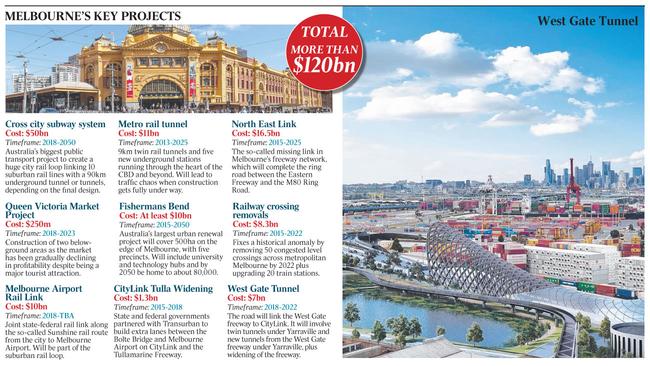
In Sydney alone, an unprecedented $120 billion has been earmarked for new railways, roads and capital works across the next 10 years as well as the long-awaited second airport at Badgerys Creek on the city’s western fringe. Gladys Berejiklian’s Coalition government says it’s only the down payment on a 40-year vision to radically reshape the NSW capital to tackle housing affordability and gridlock. This would mean Greater Sydney would be decentralised into a conurbation of three interconnected centres. The so-called Eastern Harbour City, centred on the CBD, would continue to be a hub for financial and professional services while Central River City, pivoting on Parramatta in the west, would concentrate health, education and research institutions. The third centre, Western Parkland, would be focused on servicing the emerging “aerotropolis” around the western Sydney airport, due to open in 2026.
Melbourne is matching that outlay, a function of its re-emergence as the nation’s growth centre. A pre-state election pledge this week by Daniel Andrews’s Labor government to build a $50bn subway, spanning 90km, across three decades demonstrates how the construction imperatives have changed. Most of the $120bn-plus worth of projects in the Victorian pipeline are state funded with some help from the federal government and the private sector. Not even the transformational years under change agent Jeff Kennett in the 1990s can rival this.
In Brisbane, the tally is $26.5bn in spending to 2025. The privately funded Howard Smith Wharves development, though impressive, is dwarfed by the big-ticket projects under way. Further along Brisbane River, $3.6bn will be spent on the Queen’s Wharf integrated hotel and casino resort precinct covering more than 26ha. It is set to open in 2024, the year trains are due to start running on the new $5.4bn Cross River Rail subway between Dutton Park, south of the CBD, and Bowen Hills to the north. The Brisbane City Council’s $1bn Brisbane Metro hybrid mass transit system will be in operation by then, while Brisbane Airport’s $1.35bn new runway will double passenger movements to 50 million by 2035.
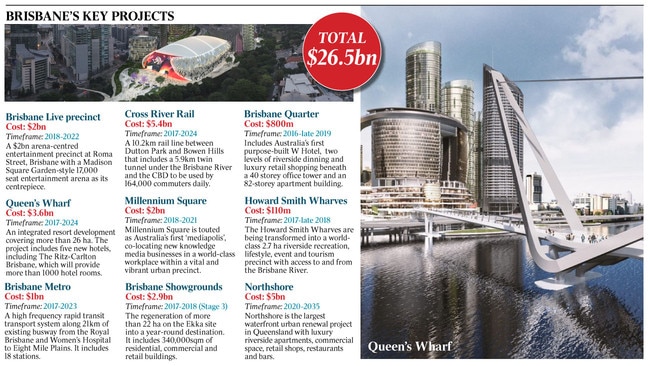
The question is, does this staggering investment in the future represent mere catch-up on the infrastructure lag bedevilling Australia’s big cities or genuine progress to retain their liveability? Can the sea of hard hats and hi-viz vests cut through the ennui of commuters and residents fed up with the daily grind of getting to work to pay a sky-high mortgage or to save for one?
Demographer Bernard Salt says the answer is yes — and no. “I think the spurt we are seeing at the moment certainly is unique in terms of the absolute numbers,” he tells Inquirer. “Neither Sydney nor Melbourne has ever added anything like the numbers they are adding at the moment in terms of infrastructure investment.”
But when Salt looks around the world, he sees few other cities in developed countries that face the challenges of Australia’s growth trio. Take Berlin, population 3.5 million. Size-wise, this positions the German capital between Sydney on 5.1 million, tracked hard by Melbourne, which ticked over five million in population this week, and Brisbane on 2.5 million. Yet in the strategic plan Berlin delivered two years ago, it will have roughly the same population in 2050. In the US, sprawling Los Angeles will grow to 22 million across that 30-year frame.
“That’s three million on top of 19 million for LA and next to nothing for Berlin,” Salt says. “Melbourne and Sydney are going to add three million on top of five each, and Brisbane the best part of two million. We need to be world’s best practice at city planning and Western car-based city infrastructure delivery. And if we are not then our cities will collapse under their own weight.”
James Tuma, national director of urban design group Urbis, agrees the population is coming whether we like it or not. But it can be accommodated. “Many of the CBDs and near areas to the CBDs have significantly more capacity to hold population so a lot of it is really about having a good dialogue with the community so that people understand the trade-offs between the benefits of increases in densities of population,” he says.
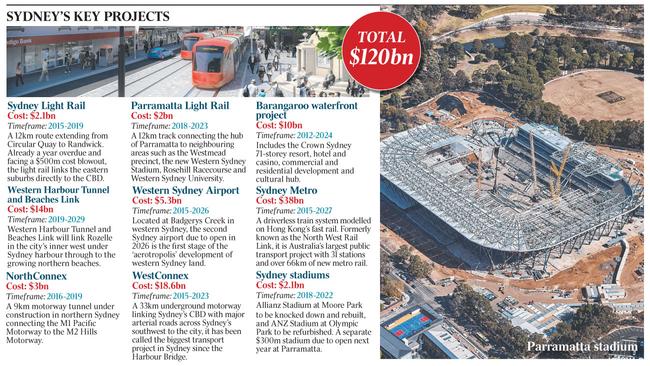
“Because the one thing around population density is not doing anything is not an option. The population is going to arrive and we need to house these additional people and employ them productively, in a way that maintains our lifestyle and all the things we value.”
Infrastructure Partnerships Australia chief executive Adrian Dwyer says the sheer scale of the task cannot be underestimated. “If you think about Sydney and Melbourne in 30 years, it will be like London and New York are today in terms of the number of people,” he warns. “There’s a huge amount of work to be done.”
Now for the tricky bit: how? Sydney’s struggle with its failing public transport system and maddening traffic congestion has dominated political debate in NSW for more than a decade, matched only by residents’ collective angst over some of the highest real estate prices in the world. When the Coalition was returned to power in 2012 under Berejiklian’s predecessor, Mike Baird after 16 unbroken years of Labor government, it rode in on a promise it would transform the city’s infrastructure. On paper, at least, the state government has delivered.
Such is the scale of the city’s masterplan, responsibility for the huge spend sprawls across five state ministerial portfolios as well as two advisory bodies in the Premier’s Department, including the Greater Sydney Commission headed by Lucy Turnbull, wife of former prime minister Malcolm Turnbull. To cope with the projected eight million population, due by 2056 on current timelines, the GSC has mandated that Sydney councils find a way to provide almost 200,000 more dwellings by 2021, just to keep up.
The state’s transport system is being radically reshaped with the promise that by 2056 up to 70 per cent of Sydneysiders will be able to live within 30 minutes of their workplace. Brisbane Lord Mayor Graham Quirk has similar ambitions for a “45-minute” city.
After more than a decade of lengthening commute times and unprecedented high-rise housing development, the planners’ vision for Sydney so far has failed to win the hearts and minds of an increasingly hostile electorate. Construction hoarding and gaping building sites seem to pockmark the city.
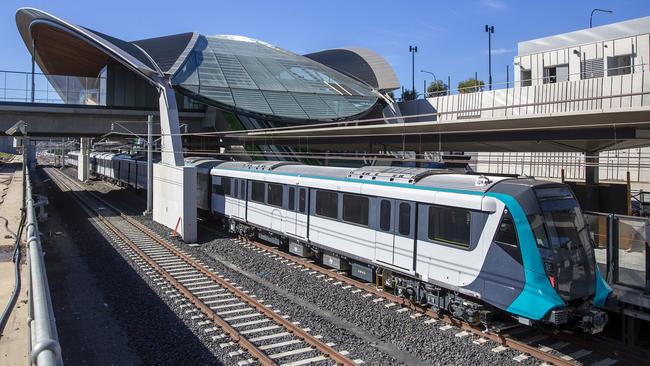
For now, there appears little relief in sight as the crush of traffic, people and an increasingly overburdened public transport system continues to worsen. NSW Planning Minister Anthony Roberts says Sydney has always had to deal with growing pains “from the time the Second Fleet arrived”. It has also suffered from some “disastrous” city planning. But after four years of major infrastructure spending worth $70bn and more to come, he says the city’s “evolution is well under way”.
“It’s been painful for us but we’ve gone well beyond the infrastructure and our focus now is on liveability,” Roberts says. “If you ask the ministers of planning around this country, they would give their left arm to be involved in what we are doing here.”
NSW Transport and Infrastructure Minister Andrew Constance has a similar message. “There’s no doubt Sydney has become one big construction site, absolutely choked by congestion,” he admits. “But in the next two years the whole face of the city will change. We have two light rail networks opening, we’ve got WestConnex and NorthConnex, and we’ve got the metro (rail) opening. We are going to continue to be a global sweet spot for infrastructure, particularly congestion-busting infrastructure which is about people’s quality of lives.”
But let’s not get too carried away. As former NSW Labor premier Bob Carr points out, the Berejiklian braggadocio is belied by the fact that after seven years in office, the state government has yet to “cut a ribbon” on one major project. In power for the decade to 2005, Carr famously tried to put a brake on population growth by declaring that Sydney was “full”. He says “every cent” of increased funding for infrastructure has been raised by a fire sale of the state’s electricity assets and ports. But the proceeds have been “squandered” on the wrong projects: from the “entirely unnecessary” light rail for Sydney’s eastern suburbs to the $8bn Middle Harbour tunnel project.
All the while, the scramble to keep up with housing demand has led to an explosion in “forests of high-rise towers” across Sydney. “The stately march of the towers threatens to swamp every new infrastructure investment,” Carr says. Predictably, he also rejects widely held criticism that infrastructure development stalled on his watch, bequeathing structural problems that snowballed into today’s epic to-do list.
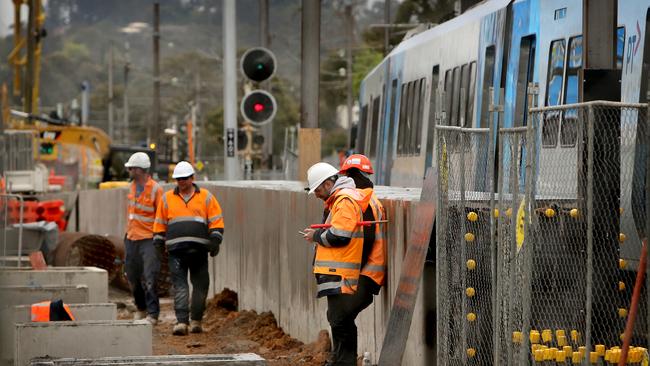
Insisting that Labor had lifted infrastructure spending by 40 per cent during his time in government, funding major projects from the Eastern Distributor to the Cross City Tunnel, Carr says then, as now, no amount of infrastructure spending could outpace the continuing migrant influx to Sydney and Melbourne. “What’s missing in this debate is a good dose of honesty,” he argues.
In February, Infrastructure Australia warned the country’s major cities were facing a “watershed” moment that would lead to a decline in the quality of life and economic productivity if governments failed to plan for population growth across a 30-year span.
The message for Sydney was particularly ominous. Australia’s ranking city would come under “significant pressure”, including a doubling of the hours spent on congested roads, almost one million more journeys on public transport and a 70 per cent rise in the demand for schools.
Carr says the federal government has profoundly underestimated the cumulative impact of historically high immigration, running at 190,000 for this year but topping 600,000 if foreign students are put into the mix, while Sydney and Melbourne and, to a lesser extent, Brisbane carry the load as the prime destinations.
Compounding Sydney’s problem, he says, is that it has been conspicuously ignored for federal funding for infrastructure upgrades. “Canberra has only ever nibbled at the problem it has created,” he complains. “It ought to be shovelling infrastructure funding to the nation’s three biggest capital cities to fund comprehensive underground metro (rail) systems.”
Yet in Brisbane, Annastacia Palaszczuk’s state Labor government is going it alone, for now, to build Cross River Rail, all $5.4bn of it, including 5.9km of twin underground rail tunnel beneath Brisbane River and the CBD.
The tortured history of the project is worth recounting because it’s an object lesson in how politics can defy good sense and planning practice. Under Liberal National Party premier Campbell Newman, whom Palaszczuk saw off in 2015, the project was to include a busway that was scrapped when Labor redid the sums. The LNP-run Brisbane City Council responded by developing its Brisbane Metro project, using new-generation people movers that can carry up to 150 in rubber-wheeled trams that can be driven like a bus, running on designated carriageways with the frequency of a peak-hour commuter service.
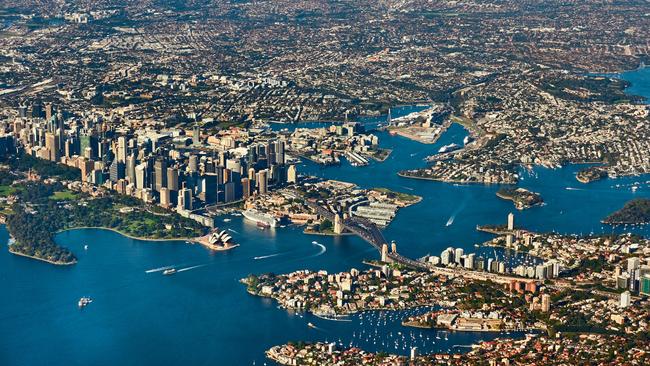
The two networks will interface, but whether this represents the best possible value for the billions being expended remains open to question. Infrastructure Australia, the federal funding arm, lists Brisbane Metro as a priority project but has snubbed Cross River Rail, buttressing the federal Coalition government’s decision to withhold funding. “We have to fit in with the arrangements of the government of the day,” Lord Mayor Graham Quirk says dryly.
If the devil is in the detail of infrastructure development, Andrews’s announcement this week of a new $50bn subway system for Melbourne certainly left much to be desired. In what was seen as a blatant pitch ahead of the November 24 Victorian election, the Premier promised 90km of new trackwork, much of it underground, 12 new stations and an airport link. But how it’s to be paid for, built and operated is yet to be explained.
As Salt points out, subway construction is jaw-droppingly expensive. The new 11km Metro tunnel to “untangle” the existing City Loop rail link works out at $1m a metre, 10 times the cost of line construction above ground. “They are extraordinary numbers, and that’s why this is the big issue,” he says.
The state infrastructure budget is huge; $12bn this year followed by $10bn a year for the next four or five years. For Victorian Planning Minister Richard Wynne, there is no option but to keep going. “We simply have to keep up with the investment. It’s a question of understanding what the challenge is ahead of us.”
When Melbourne overtakes Sydney’s population — sooner rather than later on the present trajectory — it will be a defining moment for the southern capital, which has the capacity to keep going because of large tracts of flat land on its fringes, as is the case with Brisbane. The Blue Mountains help squeeze Sydney into a restrictive, sausage-like footprint.
In the Melbourne growth corridors — there are three or four depending on how you look at the map — between 100 and 120 children are born every week in each zone. This equates to the need for four or five new classrooms each week. Central Melbourne is neither Delhi nor Nairobi but it is becoming less liveable; in the Kennett era, cross-city toll roads increasingly clogged and suburban rat runs filled with cars.
It is certainly the case that Victoria is playing catch-up; this perception is everywhere as an estimated 150,000 extra people pour into its borders annually, almost all bound for the big smoke. Dwyer talks about the three factors that need to be considered when assessing the future: resources, fatigue and funding.
The resources of an infrastructure binge are finite. Think planners, trucks, borers. The fatigue is already visible in Melbourne and, while First World, is real.
As Dwyer notes: “The old adage about cracking eggs to make omelets — it’s just a reality that if you want the step change in infrastructure, there needs to be some pain on the way through.” Meanwhile, the Victorian government has ruled out congestion taxes to unclog the roads, perhaps in part because it doesn’t have the public transport capacity to carry the surplus passengers.
In Brisbane, Quirk is grappling with how to preserve the relaxed charm of its leafy suburbs and backyard living in traditional tin and timber homes — this while paving the way for the construction of the 188,000 new homes needed between now and 2041 under the city plan and increasing the “green cover” in parks and reserves from 37 per cent to 40 per cent. Quirk says the city can’t continue to grow outward — it already covers the area of Los Angeles, with barely a fifth of the population — so the development will be infill, medium and high density close to the CBD and on designated transport corridors.
But Quirk is excited about the potential of vehicle automation to reduce congestion through “platooning” and the ability of driverless cars to slot in close together. The emergent technology is being factored into the council’s 30-year planning horizon.
Brisbane City Council is more like a city-state than a local authority, serving a population of nearly 1.2 million, which puts it into a special category. (“In Brisbane if you go out 20km from the CBD and draw a circle, there’s one council; in Sydney it will be 35 and in Melbourne 31,” Quirk says.) But the greater city area has had its issues with planning. In the 1970s, the moonlight demolitions of the gracious Bellevue Hotel in the CBD and Cloudland Ballroom in nearby Bowen Hills galvanised perceptions that Brisbane was busily tearing down its architectural heritage. As in Sydney, a useful tram system was junked in favour of bus services.
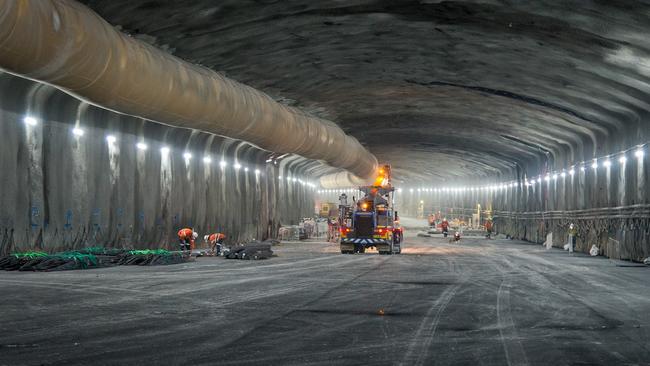
But if Joh Bjelke-Petersen was cheerleader of the develop-at-any-cost brigade, he got Brisbane’s South Bank right. The crumbling wharf and warehouse district was cleared for Expo 88 and now hosts a formidable cultural and lifestyle precinct including the Queensland Performing Arts Centre, the Queensland Museum, State Library, the Gallery of Modern Art and highly patronised public spaces. This led to a surge in development along the river.
Salt argues that Australia needs to think differently about its principal cities because they are in the process of becoming very different places, one way or another. The “fried egg” model built around the creamy yolk of a single CBD has its limits, and he says a population of four million is about it. “If you are going to have a city of eight million, then that model simply does not work,” he says.
“You cannot build enough freeways, you cannot build enough railways, to get people from the urban edge to the city centre.”
He points to the M1 motorway between the Gold Coast and Brisbane. During peak hours, it turns into a succession of parking lots, hopelessly congested by the 25,000-plus people driving to and from work in central Brisbane. Wouldn’t it be smarter to relocate their jobs closer to home?
“What you need to convert to is a multi-nodal city so you are not trying to get from Beenleigh to George Street (in Brisbane), from Penrith into Pitt Street (in Sydney) or from Cranbourne into Collins Street (in Melbourne),” Salt explains.
“The … cowardly way to manage this is to put your head in the sand and wind back the vision so you only deal with the immediate. You need to open this up, flush it out … have the debates about the rate of growth and what our living standards should be, then plan for that accordingly.”
- By Jamie Walker in Brisbane, Deborah Cornwall in Sydney and John Ferguson in Melbourne

